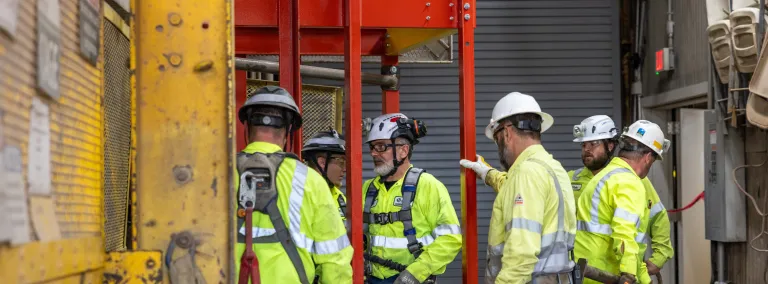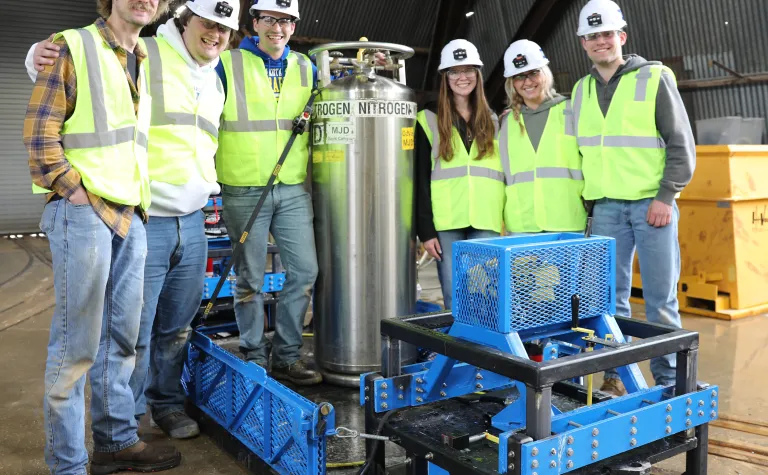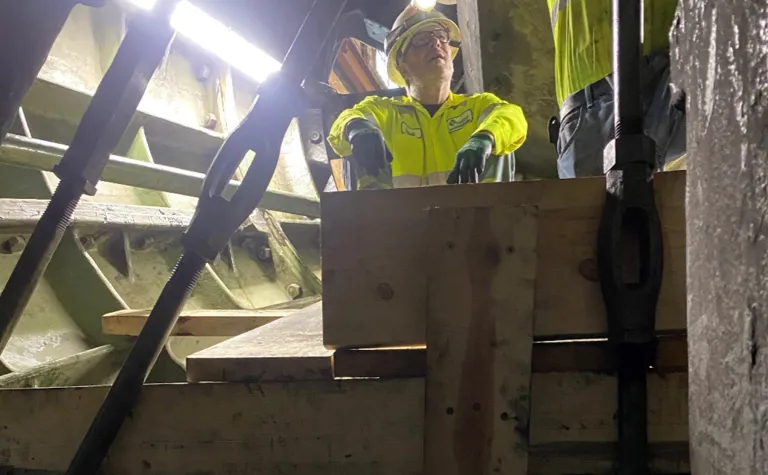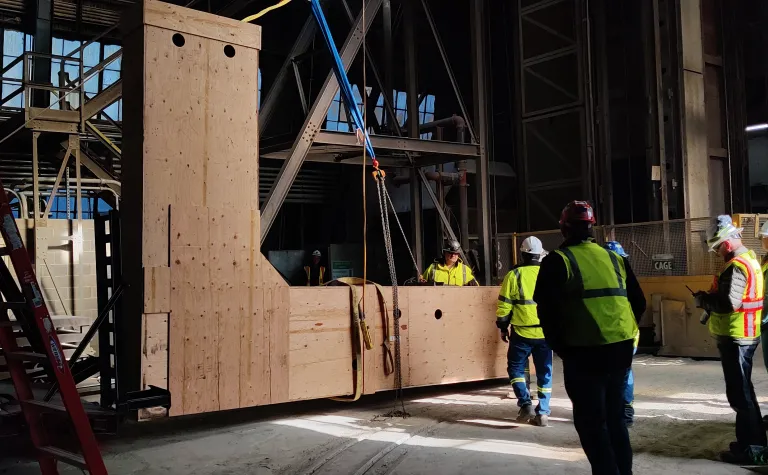SURF installs new conveyance to move DUNE steel beams underground
Each of the two massive cryogenic detectors being installed at SURF for DUNE includes about 3 million pounds of steel beams and components.
The Deep Underground Neutrino Experiment (DUNE) is full of interesting engineering challenges.
This fall, a team of engineers and technicians tackled one of them. How to transport 45-foot-long steel beams from the surface, down a narrow shaft, to the laboratory space 4850 feet below the surface at the Sanford Underground Research Facility (SURF) in South Dakota’s Black Hills. The solution is a newly designed “skip cage”—a shaft conveyance with an internal hoist capable of lifting a beam vertically and securing it safely for the journey underground.
These beams will form part of the outer shell for DUNE’s cryogenic detectors–two five-story high tanks, each designed to hold 17-thousand metric tons of liquid argon chilled to about 300 degrees below zero. Each individual piece required for these massive structures must fit into the “cage” inside the shaft that measures about 6 feet wide and 15 feet long.
Engineers and technicians working on this project have come up with multiple innovative solutions in the effort to move the 2100 structural elements for DUNE from the surface to the underground. One highlight came last year with a successful pilot test: a hovercraft that makes moving 12,000 pound steel L-shaped beams in and out of the conveyance a breeze.
For Syd De Vries, a senior project engineer with Fermilab, this new conveyance for the longer I-beams increases both safety and efficiency in the delivery of these heavy steel components. Instead of suspending beams beneath the cage in the open shaft, the system now secures them inside the cage as they are lowered.
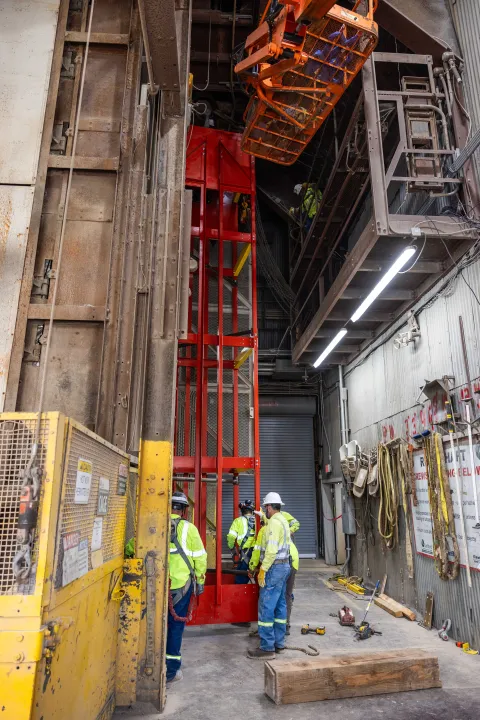
“We've set this up with the intention that it's repeatable. Every step is done the exact same way. So, for the crews, there's really no effort to rethink the load every time you lower one of these beams,” De Vries said.
Crews took about a day to install the new cage with a floor measuring 4.5 by 5 feet square and sides 60 feet high. The installation involved lifting and erecting the large structure and then connecting it to the steel rope inside the vertical shaft. Wendy Straub, SURF’s Chief Operating Officer, says this milestone was achieved thanks to leadership on the ground and teamwork from all involved.
“Sometimes, despite all the extensive planning, you need to make decisions on the fly. There was a lot of forward thinking here and I give big credit to the crews for getting it done safely and on-time,” Straub said.
DUNE is an international experiment and part of the Long Baseline Neutrino Facility (LBNF), operated by Fermi National Accelerator Laboratory. The LBNF/DUNE project is being constructed underground at SURF in South Dakota and at Fermilab near Chicago.
The first steel beams for the DUNE cryostats are expected to arrive at SURF from a warehouse yard in Rapid City early next year. Lowering of the components will begin shortly thereafter. Construction of the DUNE far detectors will continue for several years, with initial experiment data collection projected for late 2029 or early 2030.
